Predefined-Time Three-Dimensional Trajectory Tracking Control for Underactuated Autonomous Underwater Vehicles
Abstract
1. Introduction
- 1.
- A predefined-time control strategy based on RBFNNs is proposed, effectively approximating external disturbances through RBFNNs, thereby enhancing the robustness and approximation performance of the system.
- 2.
- The introduction of predefined-time control technology ensures that tracking errors converge to a neighborhood of zero within a predefined time, offering better convergence speed and performance compared to traditional methods.
- 2.
- By decoupling the control model into driven and non-driven subsystems, the control law derivation is simplified, and the unmodeled parts of the system are effectively compensated, thereby improving the stability and adaptability of the control system.
2. Problem Formulation and Preliminaries
2.1. Symbolic Representation
2.2. Lemmas and Assumptions
2.3. Kinematic and Dynamic Modeling
3. Predefined-Time Backstepping Control
3.1. Control Law Design
- Constructing the Lyapunov function to design the virtual control law;
- Adopting the RBF neural network to estimate the external disturbances of the system and identifying the unmodeled part of the system by the adaptive law.
4. Stability Analysis
5. Numerical Simulations
5.1. Simulation Results
5.2. Comparison Study
6. Conclusions
Author Contributions
Funding
Institutional Review Board Statement
Informed Consent Statement
Data Availability Statement
Conflicts of Interest
References
- Qin, H.D.; Sun, Y.C. Key Technologies and Development Trends of AUVs. Ship Sci. Technol. 2020, 42, 25–28. [Google Scholar]
- Huang, Y.; Li, Y.; Yu, J.C.; Li, S.; Feng, X.S. Current Status and Development Trends of AUV Intelligence. Robot 2020, 42, 215–231. [Google Scholar]
- Paliotta, C.; Lefeber, E.; Pettersen, K.Y.; Pinto, J.; Costa, M.; Sousa, J.T.D.F.B.D. Trajectory Tracking and Path Following for Underactuated Marine Vehicles. IEEE Trans. Control Syst. Technol. 2019, 27, 1423–1437. [Google Scholar] [CrossRef]
- Zhou, J.; Zhao, X.; Chen, T.; Yan, Z.; Yang, Z. Trajectory Tracking Control of an Underactuated AUV Based on Backstepping Sliding Mode with State Prediction. IEEE Access 2019, 7, 181983–181993. [Google Scholar] [CrossRef]
- Li, Y.; Wei, C.; Wu, Q.; Chen, P.; Jiang, Y.; Li, Y. Study of 3 Dimension Trajectory Tracking of Underactuated Autonomous Underwater Vehicle. Ocean Eng. 2015, 105, 270–274. [Google Scholar] [CrossRef]
- An, S. Robust Fixed-Time Tracking Control for Underactuated AUVs Based on Fixed-Time Disturbance Observer. Ocean Eng. 2022, 266, 112567. [Google Scholar] [CrossRef]
- Yan, Z.; Wang, M.; Xu, J. Robust Adaptive Sliding Mode Control of Underactuated Autonomous Underwater Vehicles with Uncertain Dynamics. Ocean Eng. 2019, 173, 802–809. [Google Scholar] [CrossRef]
- Yu, H.; Guo, C.; Yan, Z. Globally Finite-Time Stable Three-Dimensional Trajectory-Tracking Control of Underactuated UUVs. Ocean Eng. 2019, 189, 106329. [Google Scholar] [CrossRef]
- Chu, Z.; Xiang, X.; Zhu, D.; Luo, C.; Xie, D. Adaptive Trajectory Tracking Control for Remotely Operated Vehicles Considering Thruster Dynamics and Saturation Constraints. ISA Trans. 2020, 100, 28–37. [Google Scholar] [CrossRef]
- Yang, H.; Ye, D. Adaptive Fixed-Time Bipartite Tracking Consensus Control for Unknown Nonlinear Multi-Agent Systems: An Information Classification Mechanism. Inf. Sci. 2018, 459, 238–254. [Google Scholar] [CrossRef]
- Ye, D.; Zou, A.M.; Sun, Z. Predefined-Time Predefined-Bounded Attitude Tracking Control for Rigid Spacecraft. IEEE Trans. Aerosp. Electron. Syst. 2022, 58, 464–472. [Google Scholar] [CrossRef]
- Mei, H.; Wen, X.; Ma, X.; Tan, Y.; Wang, J. Adaptive Practical Predefined-Time Leader-Follower Consensus for Second-Order Multiagent Systems with Uncertain Disturbances. J. Frankl. Inst. 2024, 361, 106694. [Google Scholar] [CrossRef]
- Fei, J. Fuzzy Multiple Hidden Layer Recurrent Neural Control of Nonlinear System Using Terminal Sliding-Mode Controller. IEEE Trans. Cybern. 2022, 52, 9519–9534. [Google Scholar] [CrossRef] [PubMed]
- Fei, J. Fractional Sliding-Mode Control for Microgyroscope Based on Multilayer Recurrent Fuzzy Neural Network. IEEE Trans. Fuzzy Syst. 2022, 30, 1712–1721. [Google Scholar] [CrossRef]
- Xu, B.; Yang, C.; Pan, Y. Global Neural Dynamic Surface Tracking Control of Strict-Feedback Systems With Application to Hypersonic Flight Vehicle. IEEE Trans. Neural Netw. Learn. Syst. 2015, 26, 2563–2575. [Google Scholar] [CrossRef]
- Jiménez-Rodríguez, E.; Muñoz-Vázquez, A.J.; Sánchez-Torres, J.D.; Defoort, M.; Loukianov, A.G. A Lyapunov-Like Characterization of Predefined-Time Stability. IEEE Trans. Autom. Control 2020, 65, 4922–4927. [Google Scholar] [CrossRef]
- Jiménez-Rodríguez, E.; Muñoz-Vázquez, A.J.; Sánchez-Torres, J.D.; Loukianov, A.G. A Note on Predefined-Time Stability. IFAC-PapersOnLine 2018, 51, 520–525. [Google Scholar] [CrossRef]
- Sánchez-Torres, J.D.; Gómez-Gutiérrez, D.; López, E.; Loukianov, A.G. A Class of Predefined-Time Stable Dynamical Systems. IMA J. Math. Control Inf. 2018, 35, i1–i29. [Google Scholar] [CrossRef]
- Wang, Y.; Zhang, M.; Wilson, P.A.; Liu, X. Adaptive Neural Network-Based Backstepping Fault Tolerant Control for Underwater Vehicles with Thruster Fault. Ocean Eng. 2015, 110, 15–24. [Google Scholar] [CrossRef]
- Zhang, L.; Liu, H.; Tang, D.; Hou, Y.; Wang, Y. Adaptive Fixed-Time Fault-Tolerant Tracking Control and Its Application for Robot Manipulators. IEEE Trans. Ind. Electron. 2022, 69, 2956–2966. [Google Scholar] [CrossRef]
- Zhou, B.; Huang, B.; Su, Y.; Zheng, Y.; Zheng, S. Fixed-Time Neural Network Trajectory Tracking Control for Underactuated Surface Vessels. Ocean Eng. 2021, 236, 109416. [Google Scholar] [CrossRef]
- He, W.; Xue, C.; Yu, X.; Li, Z.; Yang, C. Admittance-Based Controller Design for Physical Human–Robot Interaction in the Constrained Task Space. IEEE Trans. Autom. Sci. Eng. 2020, 17, 1937–1949. [Google Scholar] [CrossRef]
- Shojaei, K.; Arefi, M.M. On the Neuro-Adaptive Feedback Linearising Control of Underactuated Autonomous Underwater Vehicles in Three-Dimensional Space. IET Control Theory Appl. 2015, 9, 1264–1273. [Google Scholar] [CrossRef]
- Cao, S.; Sun, L.; Jiang, J.; Zuo, Z. Reinforcement Learning-Based Fixed-Time Trajectory Tracking Control for Uncertain Robotic Manipulators With Input Saturation. IEEE Trans. Neural Netw. Learn. Syst. 2023, 34, 4584–4595. [Google Scholar] [CrossRef]
- Chen, H.; Tang, G.; Wang, S.; Guo, W.; Huang, H. Adaptive Fixed-Time Backstepping Control for Three-Dimensional Trajectory Tracking of Underactuated Autonomous Underwater Vehicles. Ocean Eng. 2023, 275, 114109. [Google Scholar] [CrossRef]
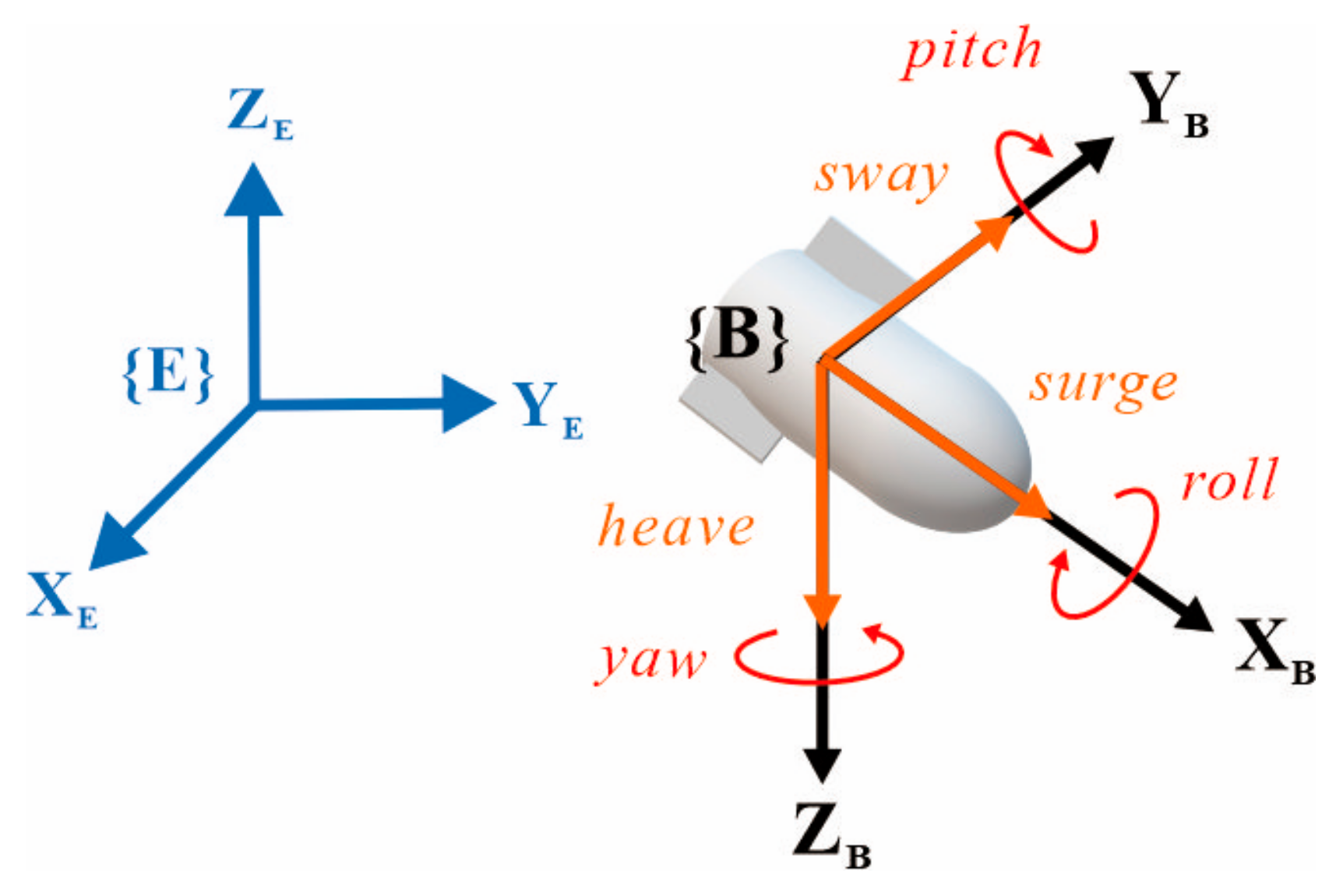

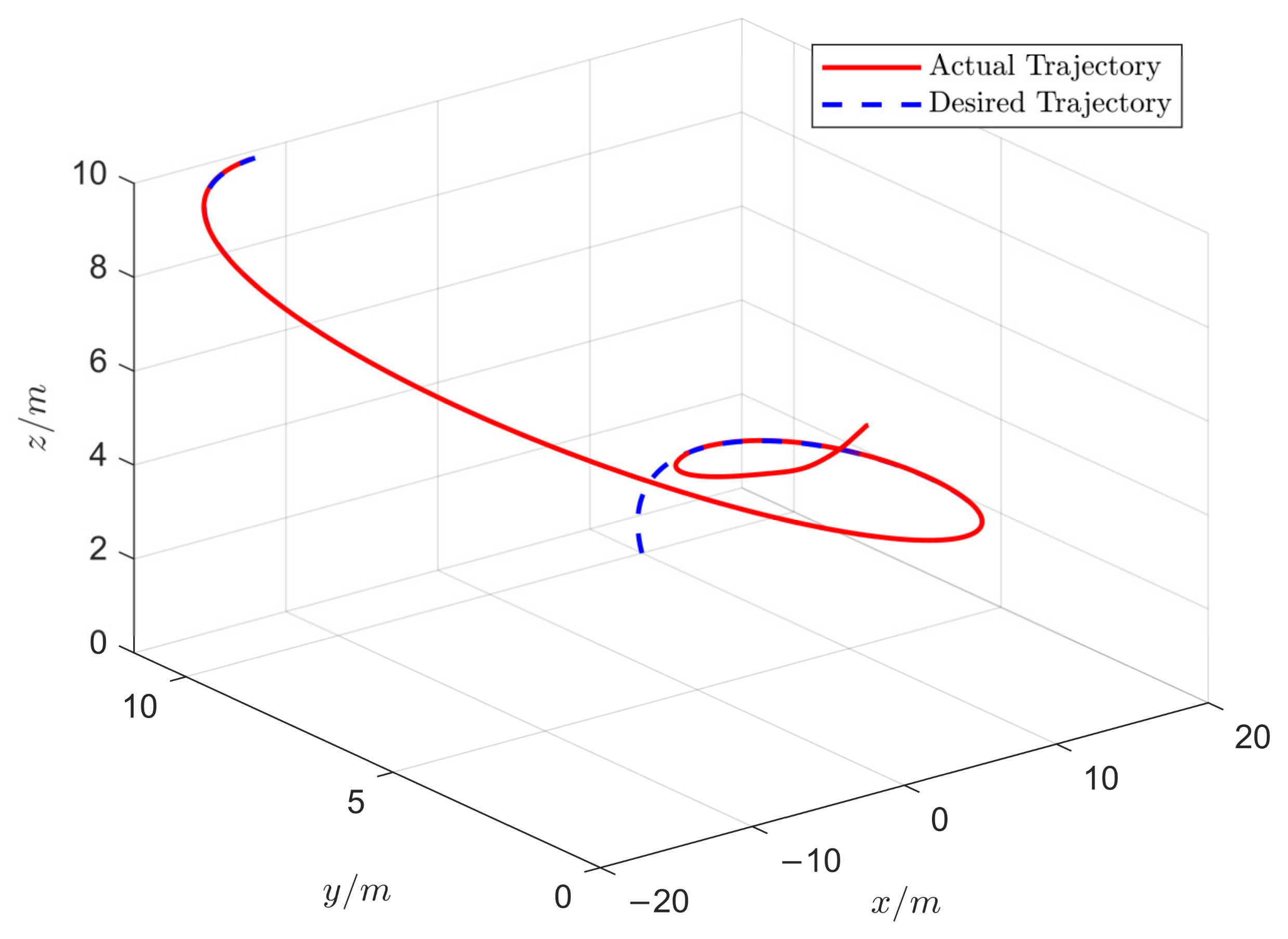
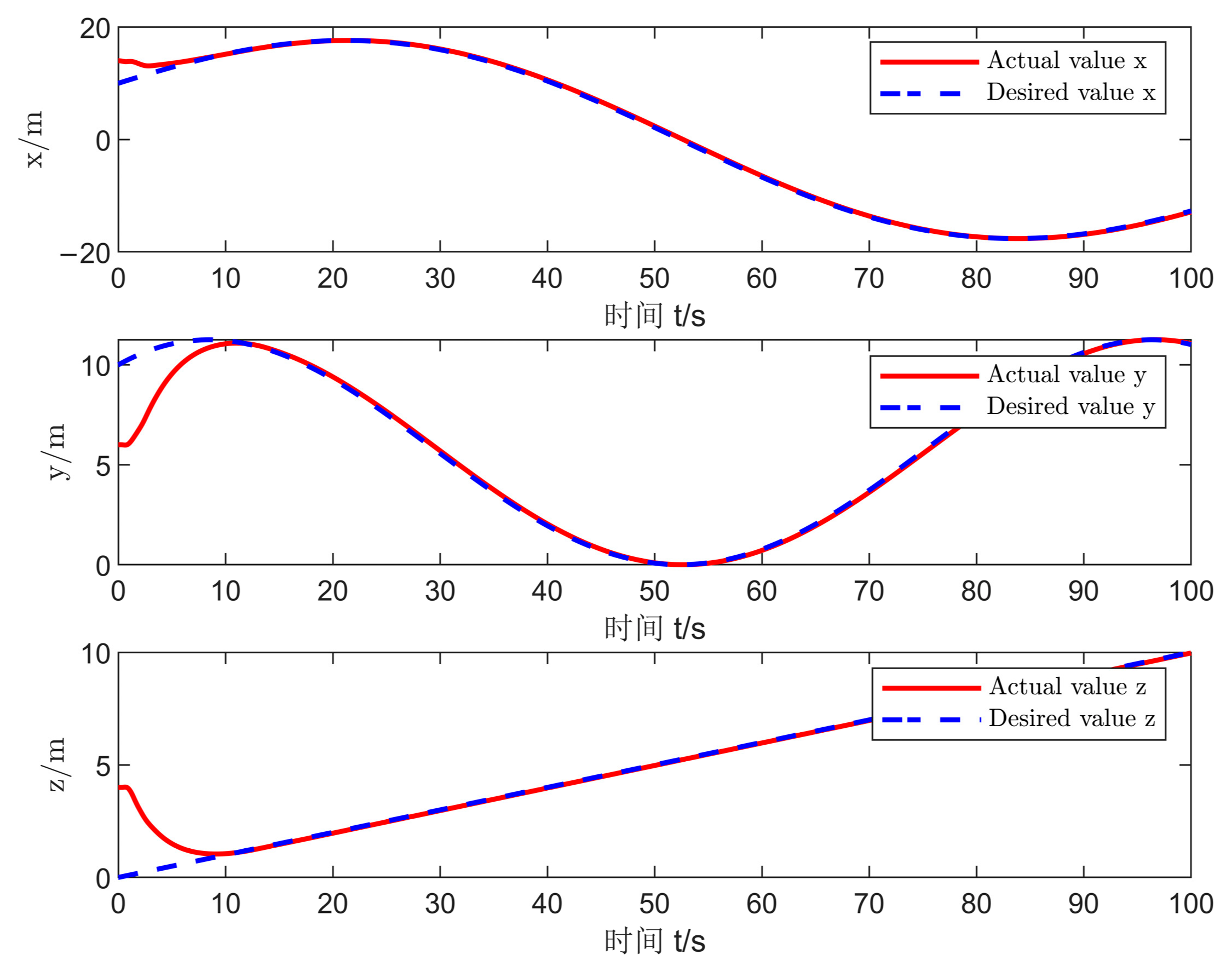
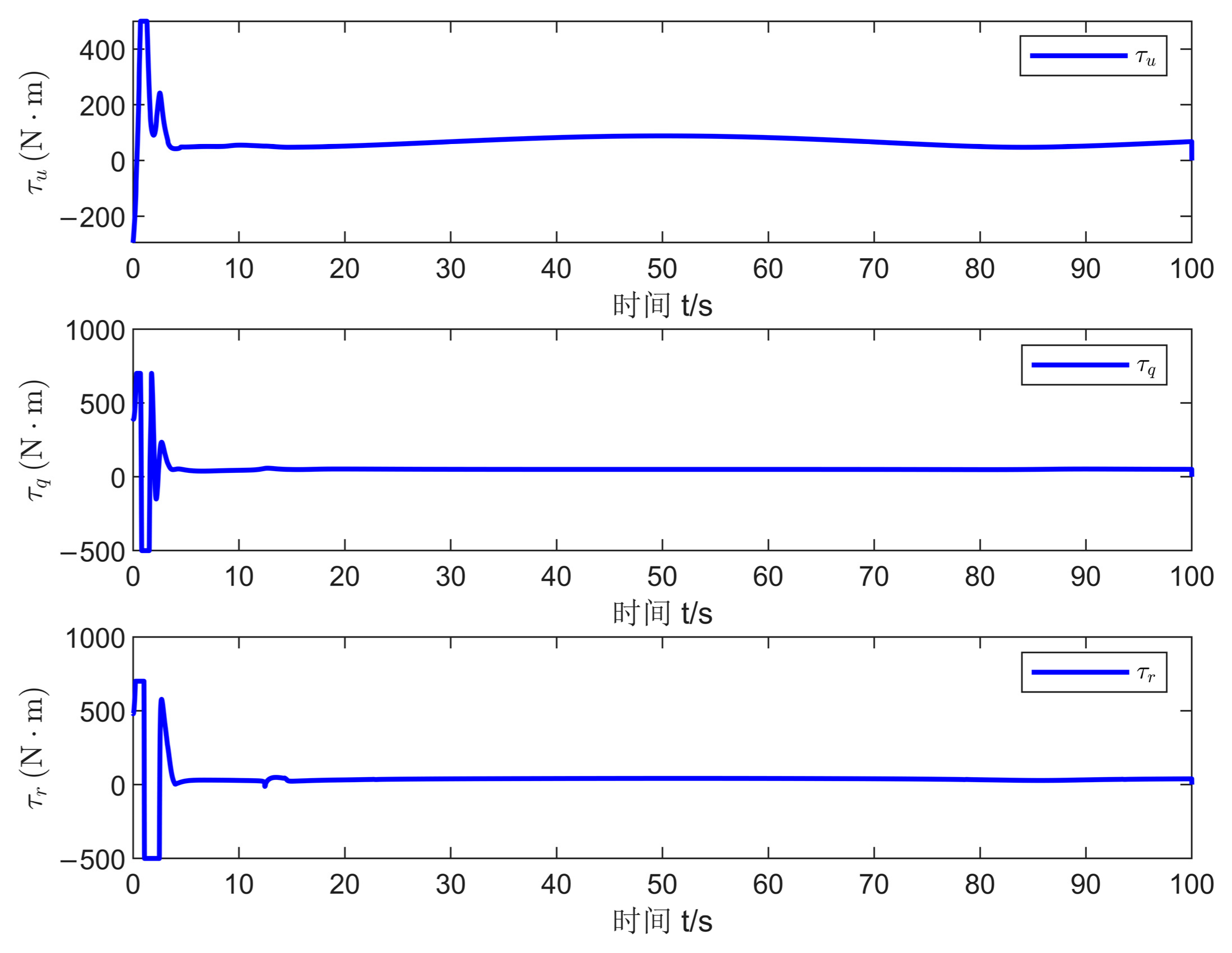
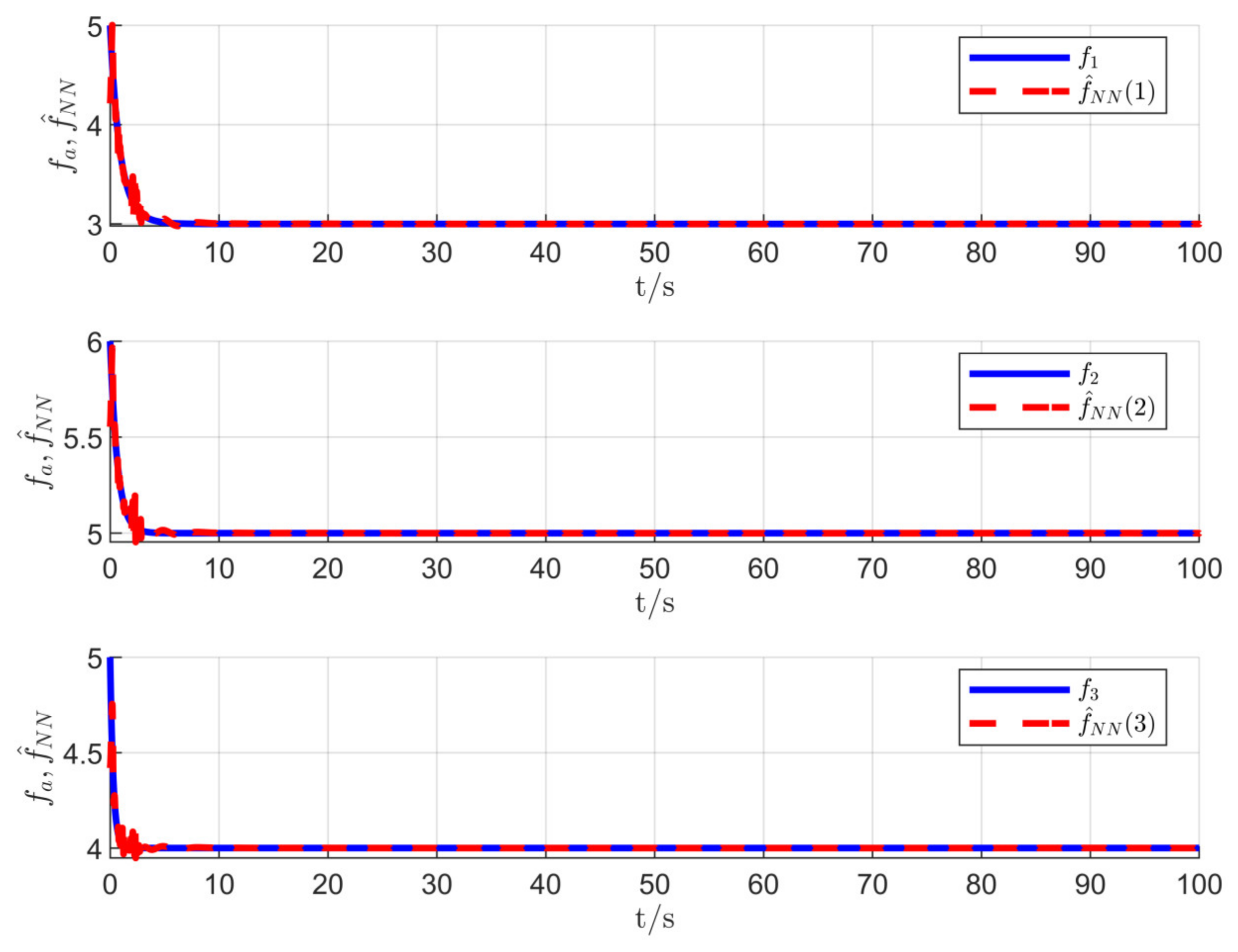
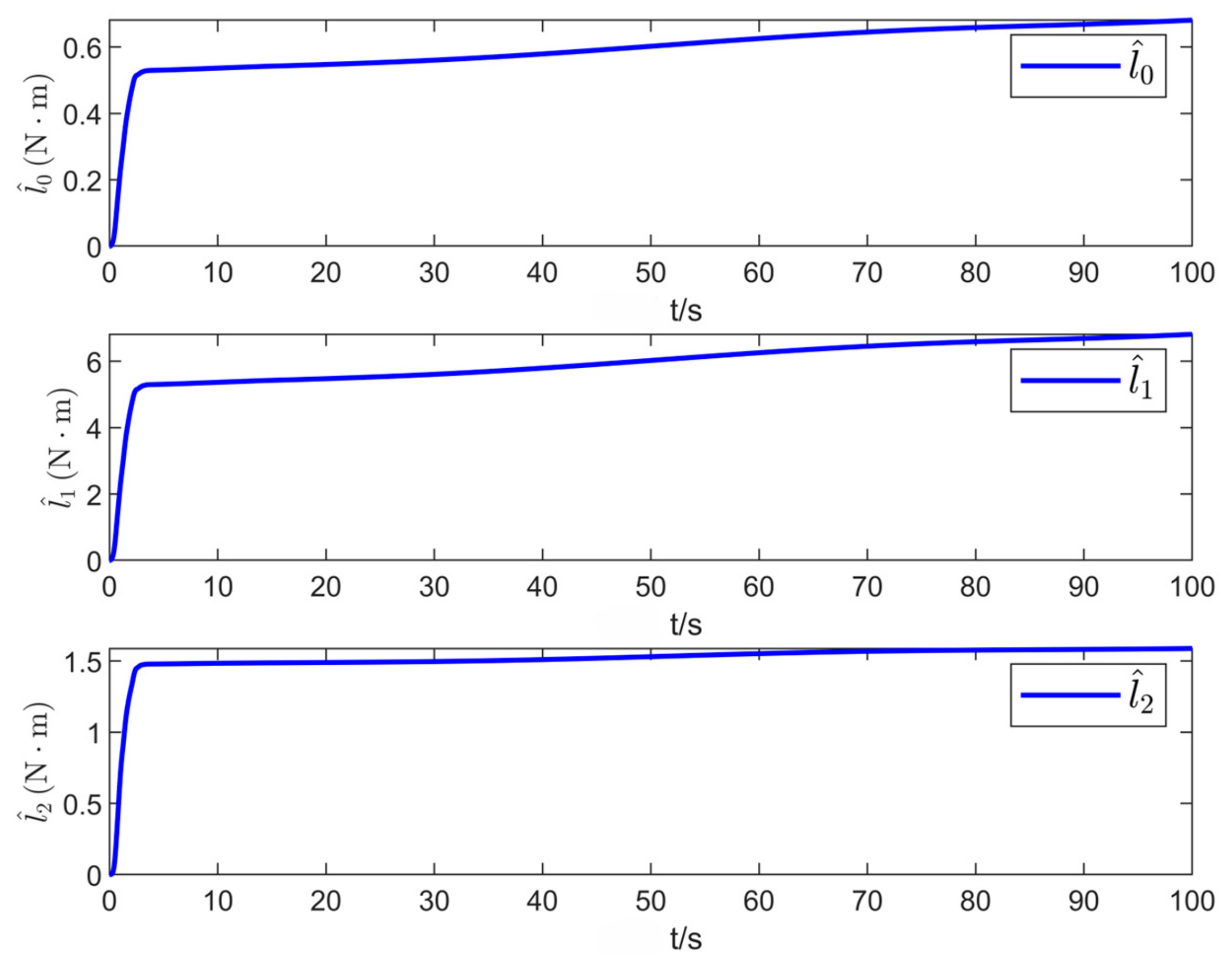

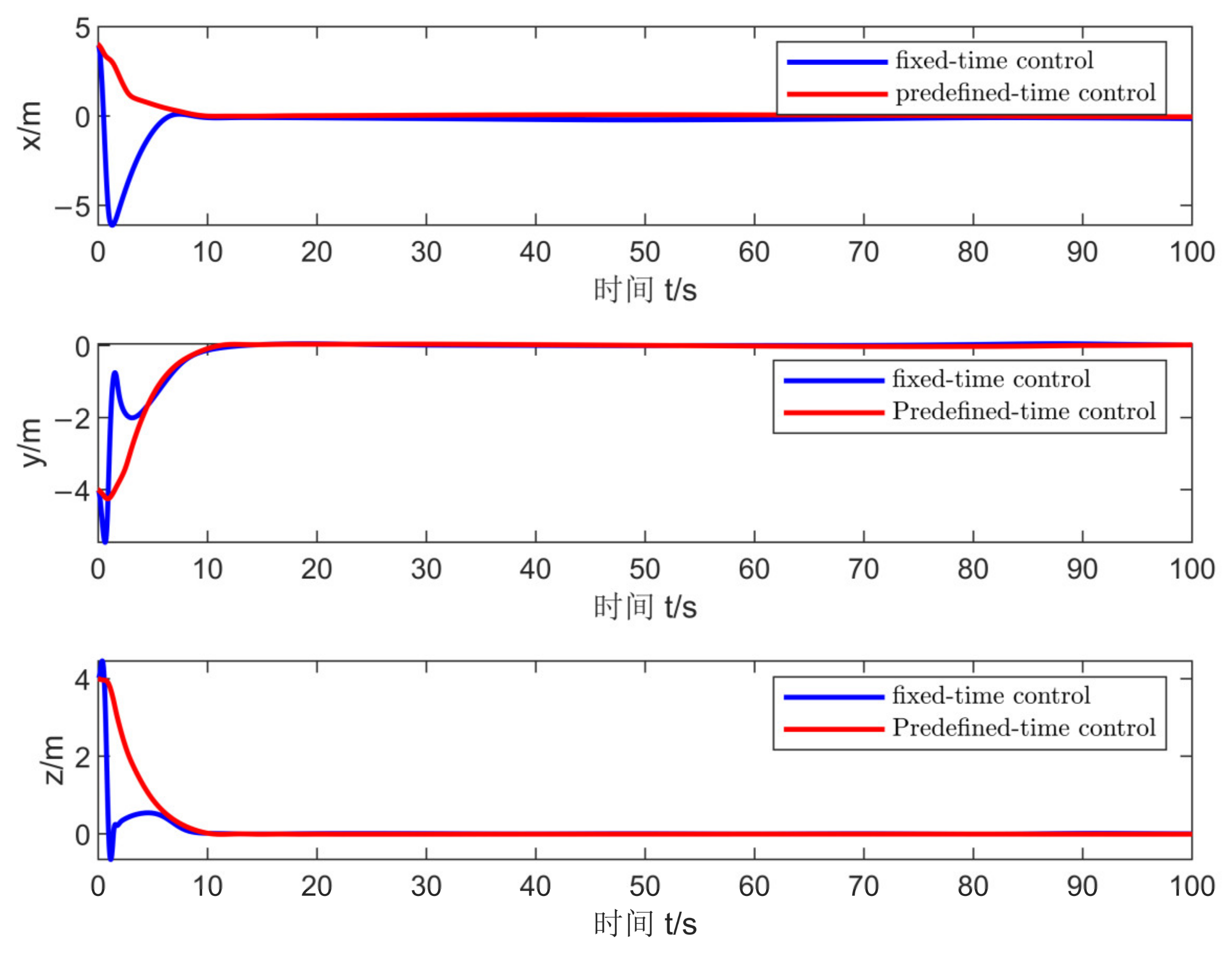

| Parameters | Values | Parameters | Values |
|---|---|---|---|
| 183 | −86 | ||
| 3 | −16 | ||
| 95 | −542 | ||
| −49 | −422 | ||
| −243 | −62 | ||
| −230 | −78 | ||
| −140 | −86 | ||
| −160 | −230 | ||
| −13 | −243 |
| Parameters | Values | Parameters | Values |
|---|---|---|---|
| 0.4 | |||
| 20 | |||
| 0.01 | |||
| 0.01 | |||
| 0.01 | |||
| 0.1 | 0.01 | ||
| 1 | 0.01 | ||
| 5 | 0.1 |
Disclaimer/Publisher’s Note: The statements, opinions and data contained in all publications are solely those of the individual author(s) and contributor(s) and not of MDPI and/or the editor(s). MDPI and/or the editor(s) disclaim responsibility for any injury to people or property resulting from any ideas, methods, instructions or products referred to in the content. |
© 2025 by the authors. Licensee MDPI, Basel, Switzerland. This article is an open access article distributed under the terms and conditions of the Creative Commons Attribution (CC BY) license (https://creativecommons.org/licenses/by/4.0/).
Share and Cite
Wen, J.; Zhang, J.; Yu, G. Predefined-Time Three-Dimensional Trajectory Tracking Control for Underactuated Autonomous Underwater Vehicles. Appl. Sci. 2025, 15, 1698. https://doi.org/10.3390/app15041698
Wen J, Zhang J, Yu G. Predefined-Time Three-Dimensional Trajectory Tracking Control for Underactuated Autonomous Underwater Vehicles. Applied Sciences. 2025; 15(4):1698. https://doi.org/10.3390/app15041698
Chicago/Turabian StyleWen, Jinzhong, Jing Zhang, and Guoyan Yu. 2025. "Predefined-Time Three-Dimensional Trajectory Tracking Control for Underactuated Autonomous Underwater Vehicles" Applied Sciences 15, no. 4: 1698. https://doi.org/10.3390/app15041698
APA StyleWen, J., Zhang, J., & Yu, G. (2025). Predefined-Time Three-Dimensional Trajectory Tracking Control for Underactuated Autonomous Underwater Vehicles. Applied Sciences, 15(4), 1698. https://doi.org/10.3390/app15041698





